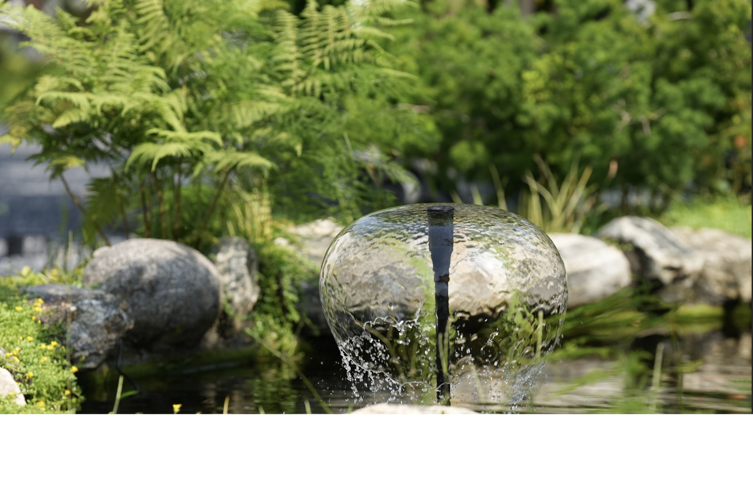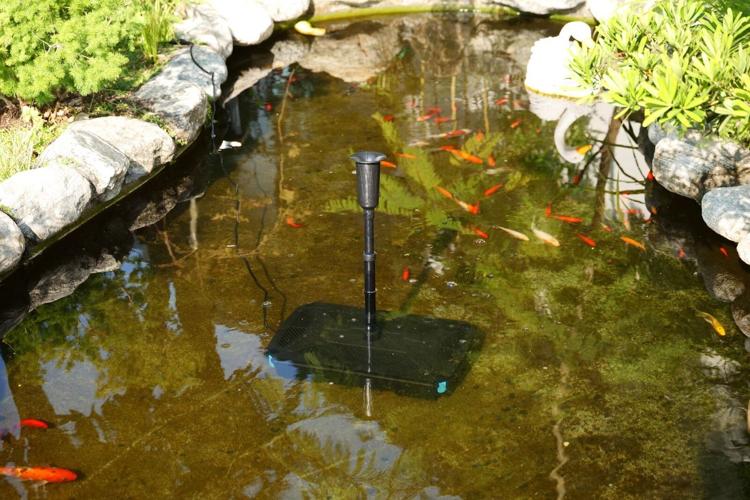
A pond filter will take out debris, excess nutrients, and some harmful substances from the water. If you don't filter the water, you will experience overgrown algae and struggle to make the fish live comfortably. An all-in-one pond pump and filter will give a good circulation and filtration system for the water.
About Poposoap Pond
Your trusted company for eco-friendly, high-quality garden pond products to turn your outdoor space into a tranquil oasis, is Poposoapsolar. If you are looking for a backyard pond, we have you covered! Whether it is a running waterfall, a serene pond, or a decorative water feature, Poposoapsolar has the products to help you design,install, and continually maintain a naturally balanced water feature. We have years of experience and have tested every pond kit and component in every application to ensure reliability, durability, and great value. Poposoapsolar's mission is simply to listen to your creative ideas and create your vision, so you can design the pond that you are thinking about. Now you can stop shopping for things that do not match in size or style. Poposoapsolar will help you effortlessly design and build the pond of your dreams. Relax and enjoy the soft sound of water as it flows through your backyard, allowing for a deeper connection with nature. Visit us at Poposoapsolar and experience an outdoor oasis with every water feature that is designed to facilitate beauty, serenity and balance to your home and outdoor space.
Why a Homemade Pond Filter is Essential
Making your homemade pond filter system allows you to control the materials that go into the system, reduce the costs associated with building a pond filter, and also allows you to customize it to the specific requirements of your pond. The organic waste generated by the fish and plants will dissolve into your pond water along with all sorts of external debris that are not filtered out of the water. If not adequately filtered, your water will become thick, causing a bad situation regarding the level of oxygen and the general health of fish. Beneficial bacteria are responsible for decomposing the waste, and they need to be supplied with the best conditions in which to do this.
Understanding the Filtration Process
The Process of Filtration A good pond filter system works using the following three filtration techniques:
Mechanical Filtration: Traps debris, dirt, and floating particles. Sponges and mesh screens are the usual filter media used here.
Biological Filtration: Aids the production of good bacteria that convert ammonia and nitrites to less harmful nitrates. Bio-balls and lava rocks are some common ones used.
ChemicalFiltration: Avoids certain dangerous chemicals, odors, and toxins with the help of activated carbon or some other filter media.
A homemade pond filter would be an excellent way to make your water clear and a good environment in which your fish can live by incorporating all three filtration types.
Materials Needed for a Pond Filter
To create a homemade pond filter, gather the following items:
A sturdy plastic container (storage box or barrel)
A pond pump compatible with your pond size
Filter media (sponges, bio-balls, or lava rocks)
PVC pipes and fittings
Drill with various drill bits
Waterproof sealant
Hose clamps and tubing
Fine mesh screen or additional foam filters
Zip ties or clips to hold filter media in place
Here's How to Build a Pond Filter Step by Step
1. Choosing a Container
One that is able to accommodate the filtering media and a pump. Make sure that it stands up to severe conditions and is waterproof. It should also be of the right size with respect to the pond. In other words, the bigger the pond, the bigger the filter box has to be, so the filtration is efficient. Acquire an all-purpose, heavy-duty plastic bin, a food-grade barrel, or a tough utility container.
2. Drill the Holes
for Inlet and Outlet Make an inlet hole for the water and another one that is where the filtered water comes out. One should be placed better for good movement of the water. Use a drill and an appropriate-sized drill bit that ensures a result for holes as you want them. The inlet hole should be bigger than the tubing, slightly, but snug, while the outlet hole should be according to the top, for filtered water to return to the pond. You could use a second overflow hole, just in case that may ever block.
3. Install the Pond Pump
Place this all-in-one pond filter and pump inside the container. It is very important that you securely fasten it down so it does not move. The pump has to be placed so as to let as much water move through filtering media as possible. Make sure it doesn't move by using zip ties or brackets. In the case of a pre-filter sponge, a nice-looking sponge that comes with it needs to be kept in place. It catches a lot of debris before entering the main filtering area.
4. Add the Filter Media

Layer Arranging the course materials, sponges, bio-balls, and lava rocks inside the container, traps debris and hosts beneficial bacteria. Starting with lava rock for the lower, coarse material and sponges or foam pads for the upper finer media. This layering ensures effective filtration that provides both mechanical and biological filtration.
5. Installing the Pipes and Tubing
Attach the PVC pipes and tubing, which will direct water flow. Use the hose clamp for a firm seal. Align the pipes properly to avoid leakage. A valve can be added to control the water flow rate into the system, while the outlet should have a spray bar, which would help distribute filtered water back into the pond evenly.
6. Seal and Test
The system places waterproof sealant around the drilled holes. After drying, test the filter by filling the container with water to check for any leaking. Run the pump while observing the flow of water so that you can detect other tech problems along its path. Make adjustments as required.
Enhance the Pond Filter System
UV Sterilizer
For ponds that have stubborn algae problems, the filtration system can be supplemented with a UV sterilizer that helps to kill off algae and harmful microorganisms and keeps water crystal clear.
Oxygen Level Enhancer
Adding an air pump or aeration system improves oxygen flow, which contributes to a healthier ecosystem in the pond. Fish and beneficial bacteria will live in well-oxygenated water.
Natural Filtration
Adding water hyacinths and submerged oxygenators will remove excess nutrients from the water, translating to reduced algae growth. You can plant vegetation at the filter's exit to provide supplementary purification.
Maintenance of the DIY Pond Filter
Pond filters should be maintained efficiently by cleaning the filter media once a month, checking for clogs, rinsing sponges when necessary, and replacing worn-out parts. Biological media should only be rinsed with pond water in order to save the good bacteria.
Weekly maintenance includes:
Cleaning out the surface debris from the filter box;
Checking for any blockage in the pump;
Analyzing the consistency of the water flow rate.
Monthly maintenance includes:
Rinsing of the sponge and mechanical filter media;
Checking piping and fittings for leaks;
Checking electrical parts and fittings.
Heavy cleaning of the filter system, before winter; reduced feeding in winter months.The treated filtration system according to changing pond conditions is necessary
Seasonal Maintenance Tasks:
Deep clean the filter system before winter.
Reduce feeding in colder months to minimize waste buildup.
Adjust the filtration system for changing pond conditions.
Troubleshooting Common Issues
If your pond is still cloudy, check the filter media. It may be a bit clogged.
Cloudy Water
If your pond remains cloudy, check if the filter media is clogged. Rinse mechanical media and add extra filtration layers if needed.
Slow Water Flow
Ensure the pump is functioning properly and that there are no blockages in the pipes. Clean the intake and outlet areas.
Algae Growth
Using a mixture of shade plants, UV sterilizers, and regular maintenance will do the trick to control algae blooms.
Building a homemade pond filter box will enhance water quality and promote a thriving pond ecosystem. A well-maintained all-in-one pond filter and pump setup keeps the pond clear and healthy. Regular maintenance and upgrade would mean a long-life service from the installation for a successful DIY filter solution that provides clean, oxygen-washed water for fish inhabitants of all ponds is a DIY solution for efficient and reasonably priced filtration.



(0) comments
We welcome your comments
Log In
Post a comment as Guest
Keep it Clean. Please avoid obscene, vulgar, lewd, racist or sexually-oriented language.
PLEASE TURN OFF YOUR CAPS LOCK.
Don't Threaten. Threats of harming another person will not be tolerated.
Be Truthful. Don't knowingly lie about anyone or anything.
Be Nice. No racism, sexism or any sort of -ism that is degrading to another person.
Be Proactive. Use the 'Report' link on each comment to let us know of abusive posts.
Share with Us. We'd love to hear eyewitness accounts, the history behind an article.